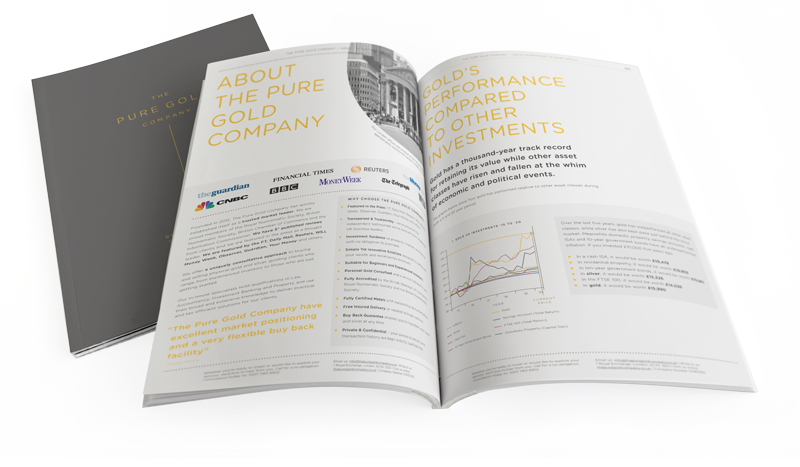Just as the world is finally beginning to emerge from the unprecedented disruption of the pandemic, a new geopolitical crisis threatens the fragile recovery of societies and economies across Europe. After weeks of amassing troops on the Ukraine border, Russian President, Vladimir Putin ordered them into rebel-held areas of Ukraine. This all occurred this Tuesday 22nd February in a move Boris Johnson believes is the precursor to a full invasion. The UK has pledged to impose immediate sanctions and Western allies are considering what sanctions to impose.
Market Volatility
The heralded invasion of Ukraine and the expected response by the EU and US has caused much market volatility. Oil prices have spiked, gold prices have risen and global stock markets have begun to tumble. Investors are rushing for safe-haven assets like gold amid rising uncertainty and escalating tensions. So, what is the conflict about and how might it affect your assets?
Gas Shortage
The Western response to a potential Ukraine crisis as a result of Russia’s manoeuvres is a key issue in the crisis because Europe relies heavily on Russian gas supplies. Around 35% of Europe’s natural gas is imported from Russia via several pipeline routes. Some of these flow directly through eastern europe and Ukraine.
The price of gas was high even before Putin began amassing troops along the border. 2021 saw a combination of constrained gas supplies (some of which were related to pandemic shutdowns) and burgeoning demand as Europe started on a tentative economic recovery. Gas prices surged, adding momentum to already-rising inflation, and the situation in Ukraine has exacerbated concerns about gas availability and prices.
At issue in the current conflict is a complete but not operational gas pipeline running from Russia directly to Germany, bypassing Ukraine and allowing other nations to be excluded from gas supplies. There is concern that Russia would use the gas pipeline, Nord Stream 2, as a political weapon.
Financial Sanctions
It has been widely trailed that Western allies will object to the Nord Stream 2 project in their sanction measures against Russia. Other suggestions for sanctions include making it difficult for Russian banks to do business overseas by excluding the country from the global transaction messaging system. Targeted export controls, energy restrictions and currency sanctions may also be used.
Geopolitical tensions
The UK, and London in particular, has become a haven for Russian billionaires. Boris Johnson said on Tuesday that the UK will crack down hard on Russia. “Be in no doubt that if Russian companies are prevented from raising capital on the UK financial markets, if we unpeel the facade of Russian ownership of companies, of property, it will start to hurt.”
Impact of Ukraine crisis on global stocks
As the Ukraine crisis has deepened with the looming threat of an apparently imminent Russian invasion, the fallout has begun to be felt further afield. Russian markets have slumped by a third since October as the crisis has loomed, and European markets fell on opening Tuesday, following Asia stocks lower after Russian troops entered eastern Ukraine, although they were paring losses later in the day.
Oil prices surged to seven-year highs amid fears of a full-blown war should Putin invade Ukraine. Many analysts expect the price to breach the $100 mark for the first time since 2014.
Looking Into Gold Investment?
Book a FREE consultation with our expert brokers at The Pure Gold Company.

Safe haven yellow metal
The gold price has also been on the rise as tensions have mounted, rising to nine-month highs as investors have flocked to the safe-haven metal. Gold has a venerable history as a store of wealth. It has been used for thousands of years as a currency because of its rarity and elemental stability. Gold has maintained its value even as currencies and assets have fluctuated. The majority of market declines have seen a flight to safe-haven assets like gold which have maintained or increased in value. The expectation of a worsening crisis is impelling investors to secure their assets again.
History of Gold Prices during a crisis
The 1973/74 oil crisis, which sent energy prices soaring, dragged the S&P 500 down 48% over 21 months. The gold price meanwhile almost tripled from $65 to close to $170 in the same period. Investors sought somewhere safe to store their assets amid geopolitical uncertainty and financial decline.
Meanwhile, the bursting of the Dotcom bubble sent the markets on a long downward spiral, falling almost 50% in the months between early 2000 and late 2002. But during that time gold held its own, staving off the slump that besieged overvalued stocks and rising more than 10% in the period. It has risen over 550% since then.
War or the threat of war has also helped push gold prices up on safe-haven demand. Gold rose as the first gulf war began, surged following the September 11, 2001 attack on the United States and ticked up when the US invaded Iraq. Globalisation means countries are more interconnected than ever before. Instability in one region can have a marked effect across the world.
Retail investors turn to precious metal gold
It’s not just large-scale investors or banks that are looking to protect their assets with a flight to safety in the form of physical gold. Clients from all backgrounds including teachers, doctors, engineers and investment bankers have pushed up demand at The Pure Gold Company by over 300% in the last week. Many are anxious about leaving their savings in banks or keeping investments in the stock market as the turbulent conditions could get worse in the days and weeks to come should there be a Russian attack.
Seeking protection for pension funds
The company has also seen a 619% increase in people removing exposure to equities and funds within their pension / SIPP in order to purchase physical gold bars within the same vehicle. The financial aftermath of the pandemic coupled with inflationary pressure and geopolitical uncertainty is negatively affecting equities which can adversely weigh on people’s retirement prospects. Purchasing gold allows clients to remove their wealth from the banking system during times of unrest but with the necessary liquidity to buy back into the equity market when they’re ready to do so.
Safety and Security
CEO Josh Saul says: “Our clients do not purchase gold purely for growth. It is safety and security from unpredictability that is the underlying driver. Clients understand that their savings are in an asset class that is physical. Physical Gold tends to increase in value during times of uncertainty (and free from tax in certain circumstances). Gold can be converted back into cash quickly. Gold has been a safe-haven asset for hundreds of years, and more recently increased in value during the uncertainty and turmoil of Brexit and the COVID-19 outbreak. Many are looking to this safe haven now as the geopolitical and economic uncertainty returns.”


